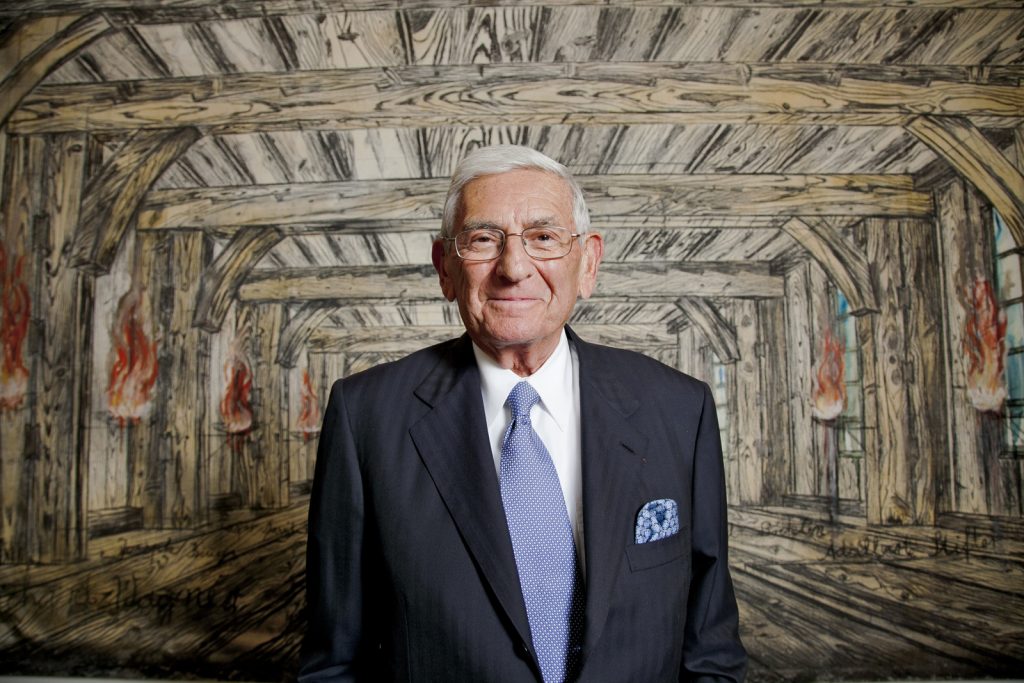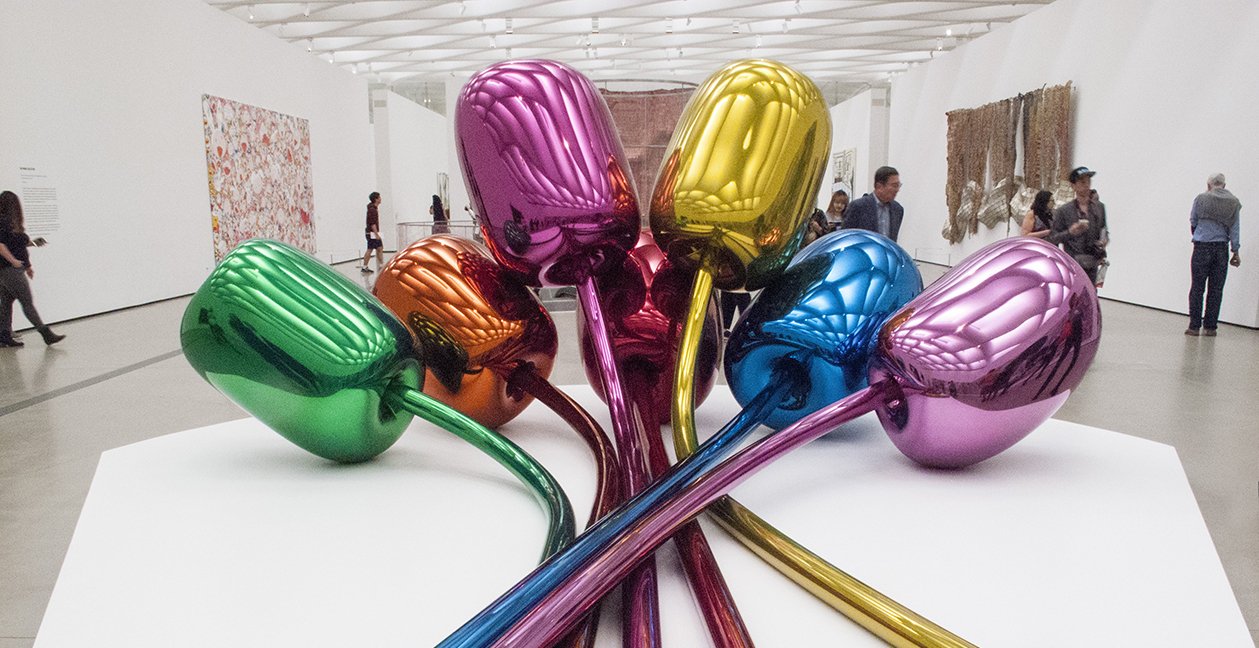There was once a magnate from a powerful banking family who was taken with the extraordinary talent of a young artist. He was so impressed that he paid for the artist’s education and even gave the young man’s father a job. The wealthy patron was Lorenzo de Medici and the young artist was Michelangelo.
A home run like that is once in a millennium, but there are many ways that people with resources can do more to nurture great talent than just purchasing their work. “Eli Broad has this extraordinary museum of his own holdings,” notes Wendy Cromwell, founder of Cromwell Art and a member of the Association of Professional Art Advisors (APAA). “I would think that he has very strong relationship with the artists who he has collected in depth over the course of 40, 50 years. I think you could absolutely call him a modern Medici.”


Although getting in on the ground floor of an emerging artist’s career can be a lucrative financial investment, it is universally accepted that the raison d’etre for patronization has to be passion, not profits. “When collectors want to get involved with the young artists or emerging artists it’s because they have a real interest in and love for the work that they’re making,” says Megan Fox Kelly, president of the APAA and an art advisor with offices in New York and Los Angeles.
Of course, one doesn’t just walk up to an artist and offer to pay their rent. Trust needs to be built. “Doing things that help to elevate an artist’s career—that’s what true patronage is,” says a prominent art advisor on background, “Not, ‘I’m going to buy a bunch of things because I’m going to flip your works when you’ve started to make something of yourself.’ That’s a good way to get yourself ostracized.” According to all, gallerists, dealers and the artists themselves can smell a mercenary a mile off.
With some of the finer galleries keeping long waiting lists to even look at new work, destroying trust can be a bitter pill to swallow. But with the right motivations, nurturing emerging artists is one of the most gratifying pursuits a wealthy person can undertake. “Collectors who support artists, and actually become very good friends with them—it is incredibly rewarding,” says Cristina Enriquez-Bocobo, partner in charge of arts and nonprofit innovation at Makeable, a branding company, and a former specialist at Sotheby’s. “Especially if they become a part of their professional trajectory.”

“To me, one of the best things about being interested in art is getting to know the artists,” says Wright Harvey, founder of the art advisory Sugarlift. “Because the best artists are typically thinking on a different level.”
Plus, “Once you start collecting, you just want more,” says Karyn Mannix of Karyn Mannix Contemporary in East Hampton, N.Y., and a collector in her own right. “It’s just like a rush that you get when you’re a collector.”
Here’s how to find that rush.
Educate Yourself
“If you see something and it speaks to you on a deep level, chances are that that is the right piece for you,” says Wright Harvey. “But—and it comes with a heavy but—you really need to spend a lot of time looking at artwork at institutions, really understanding the art, the important work in art history and how they connect together.”
Other suggestions on familiarizing yourself with not just what has value but what one likes, include going to art fairs, gallery open houses and studio tours. In short, the idea is to really expose yourself to the market before even taking the first efforts to collect, much less patronize, an artist.
Get an Art Advisor
While gallerists and dealers are often keen to create relationships with customers, by nature, their primary interest is in the artist. This can create conflicts of interest. Art advisors, on the other hand, are “objective advocates who work solely in the best interests of our clients,” according to the APAA’s website.
Art advisors are different than art consultants, with whom many are familiar from the corporate world. Among other tasks, consultants often act as a kind of liaison, helping to find art to fill commercial and corporate spaces. Art advisors are more like guides for their clients as well as someone who can open doors to those super-selective galleries. Having the right advisor offers an immediate stamp of approval.
According to Nina del Rio, vice chairman, Americas for Sotheby’s, choosing the right art advisor can be one of the most important decisions one can make in the endeavor of art collecting. “The best art advisors say, ‘Let’s go and I’m going to help you educate your eye,’” she says.
Enter the 21st Century
“Our market is changing pretty rapidly really as we speak,” says Harvey. “It’s been one of the slowest markets to adopt technology. Ten, 20 years ago collectors would either go to the auction house or an art gallery. Those were really their only options. But the big disintermediation of the art gallery has been social media and primarily Instagram.
Artist are now able to get their work out without middlemen. So collectors now are able to follow artists who have struck their fancy at an art fair or group show as they never have been able to do in the past. Artists promote their own openings and exhibits through various platforms, including Twitter and Facebook.
And if one does attend a show opening, the artists are often quite approachable. “I think that’s one of the cool aspects of my career and creativity,” says Jack Laroux, an artist based in New York and the Hudson Valley. “Meeting people from all walks of life. And if we share similarities, it’s great. They’re buying my work that I sit in front of for hours and hours and pull my hair out about. And they’re buying that to put on their wall. So to meet the artist and hang and have a relationship, I think that’s a cool thing.”
Artists also say that they love to see where their work ends up being displayed in the purchaser’s home or office.
Be Creative
The highest standard of patronage seems to be purchasing work and donating that work to a museum. Not only does it push an artist’s career forward, but it gets his or her work seen by exponentially more people than in a private collection.
But there are many other ways that someone with means can help an artist. Mannix suggests one win-win scenario with which she is familiar: Collectors purchase a piece and then donate it to an auction for a charity. “Then people start bidding and that’s another way to get [the artist] out there,” she says.
Sometimes, she continues, the most noble act of patronage is to introduce an artist to other art lovers who may be interested in making a purchase. “They will host a party for them, like ‘meet the artist.’”
In-kind donations are yet another way affluent people help artists. It is not uncommon for someone with multiple homes to offer an artist a place to work, be it a flat in London or a home in the Catskills of upstate New York. “It happens all the time,” says Enriquez-Bocobo. “I mean, we ourselves keep our guest house, and many other people have done this, as an artists’ residency.”
“I follow this Instagram account,” adds Laroux. “I believe they’re in the South of France and they have a chateau that they grant to artists—and then their only take from it is taking one piece that you create during your time period there.”
In recent years, technology has opened up perhaps the simplest way to support an artist. “There are platforms out like [online subscription service] Patreon,” says Indira Cesarine, a New York-based visual artist, “where artists have set up platforms for the people who admire their work to send money, anywhere from like $5 to $50,000.”
Don’t Be Pushy
Many artists complain that collector-artist relationships can sometimes be too forced. They say that purchasing their work doesn’t guarantee getting a piece of their time as well. But such obstacles are usually overcome with a little diplomacy and tact. “I think a lot of artists might think it’s a bit too much, too soon to be invited to a one-on-one dinner right after meeting,” says Cesarine.
“But at the end of the day, I definitely think that people love not only receiving invitations but love selling their artwork. They’re like, yes, yes, yes.”
///
Getting Started
Interested in becoming a patron or art collector? These six resources will help you learn more.
The Art Dealers Association of America (ADAA), an invitation-only association with 180 member galleries in 30 U.S. cities, 212.488.5550, [email protected]
The Association of Professional Art Advisors, whose advisors adhere to a code of ethics and whose website features a directory of members, making finding an advisor in one’s area easy, 718.788.1425, artadvisors.org
Cromwell Art, an art advisory firm that focuses on modern and contemporary art, 212.712.2177, cromwellart.com
Megan Fox Kelly Art Advisory, a full-service art advisory practice, 212.505.3405 or 310.943.3405, meganfoxkelly.com
Sotheby’s, renowned auction house offering an array of services for collectors with offices worldwide, sothebys.com
Sugarlift, an art advisory dedicated to emerging artists, 917.370.5030, sugarlift.com






